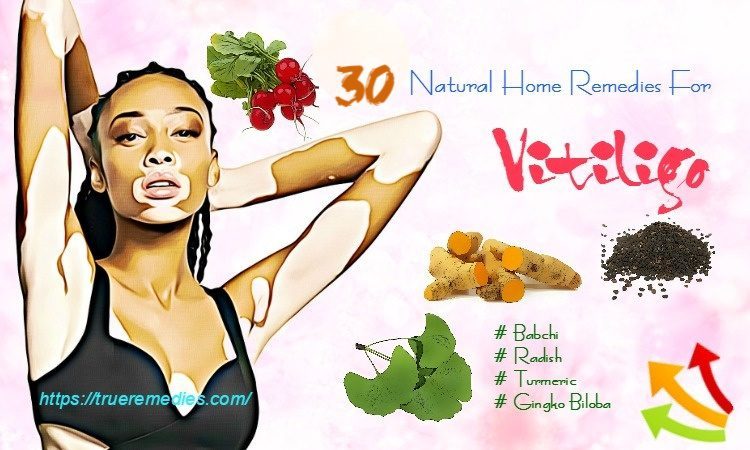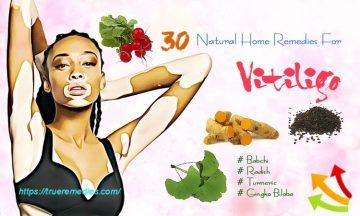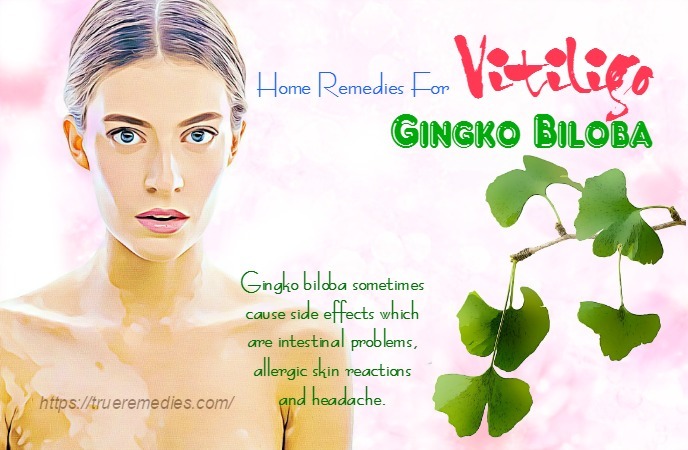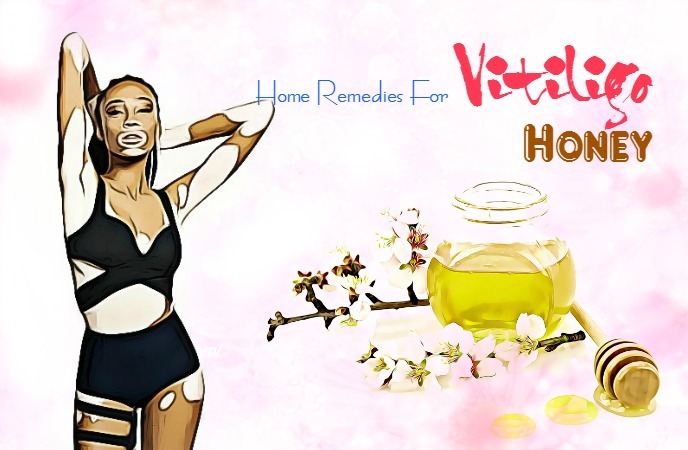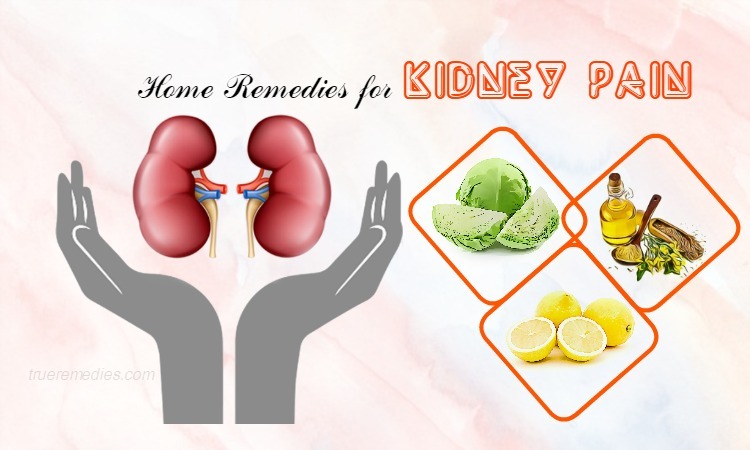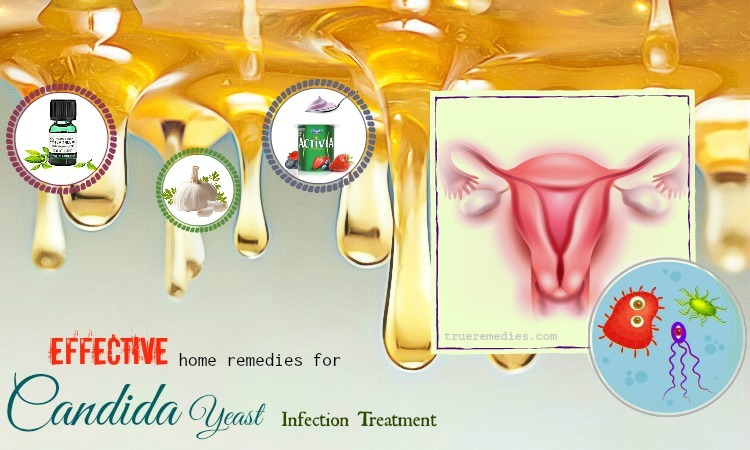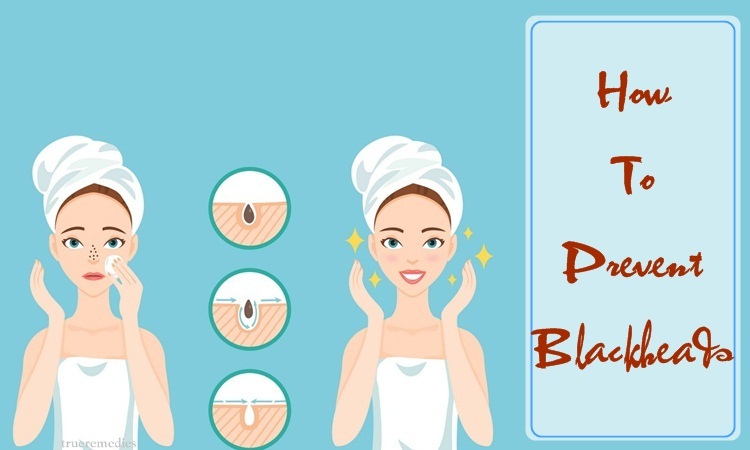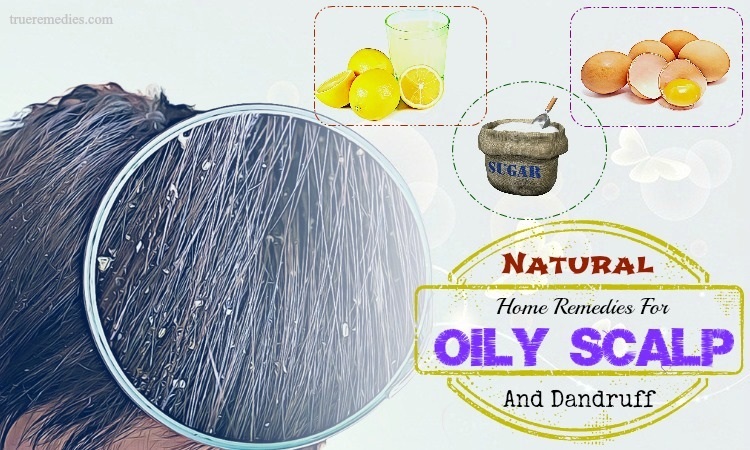updated: 06/07/2019
CONTENTS
Vitiligo is a long-term and continual skin condition that produces white patches developing and enlarging in some specific skin areas. The total skin area that could be affected by this condition may vary greatly from person to person. To understand more about vitiligo and how to treat it, you should learn what vitiligo is, what causes it, what common symptoms are, etc. Now, it is time for you to know how to take control of this condition by using natural treatments. Keep reading to get some of the best natural home remedies for vitiligo relief on face and lips.
- Home remedies for skin fungus on hands, thighs & legs
- Home remedies for cellulitis infection on legs
- Home remedies for staph infection on face & scalp
- Home remedies for heat rash on face, neck, arms, and legs
What Is Vitiligo?
Vitiligo is a disease featuring with the loss of skin color in the blotches. As usual, the rate and extent of color loss from this condition is not predictable. Vitiligo can affect the skin on any body part, from hair, eyes to the inside area of the mouth[1].
The color of skin, hair, and eyes is naturally determined by melanin. But, when vitiligo happens, it makes the cells producing melanin stop their functions or even die. As an estimation, this condition affects people with all skin types, yet for those people with dark skin, it might be more noticeable. It is not contagious or life-threatening, but stressful or makes sufferers unconfident about themselves. Vitiligo is sometimes related to autoimmune and inflammatory ailments such as scleroderma, Hashimoto's thyroiditis, type 1 diabetes mellitus, rheumatoid arthritis, Addison's disease, psoriasis, anemia, celiac disease, alopecia areata, systemic lupus erythematosus, and pernicious. Nowadays, the treatment for vitiligo might just improve the affected skin appearance but not cure completely this condition.
What Are Causes Of Vitiligo?
The cause of vitiligo is unknown. This might be an autoimmune disease, which happens when the human immune system mistakenly attacks some body part. For vitiligo condition, the immune system might damage the melanocytes of the skin. Also, it is possible that one more genes provoke an individual more prone to this disease.
Some researchers say that the melanocytes damage themselves while others think that an event such as emotional distress and sunburn could lead to vitiligo. However, those events have not been proven to cause vitiligo. To sum up, most of the research points to the followings:
TrueRemedies Partner Solutions

Need a Help from the Leading Expert Online, Available 24/7?
They’re all here and ready to answer your questions online or by phone. Keep asking questions until you get the answer you need.
- An autoimmune disease
- A stressful event
- Genetic oxidative stress imbalance
- Exposure to chemicals
- Heredity
- Consequences of a critical cut or sunburn
- A viral cause
It is not transmittable or contagious. People could not suffer from it from others. It is estimated that less than 1% of the general population is affected by vitiligo.
What Are Types Of Vitiligo?
Scientists divide vitiligo into two types: segmental vitiligo and non-segmental vitiligo.
- Non-segmental vitiligo: This is the most common type of vitiligo that affects more than 90% of people. In this type, the patches usually happen equally on both sides of the human body. Not only does it appear on the skin area exposed to sunlight, such as the face, hands and neck, but also arms, eyes, elbows, knees, mouth, nostrils, umbilicus, genitalia, and feet. Ỉ is broken down into many sub-categories such as acrofacial vitiligo, generalized vitiligo, universal vitiligo, mucosal vitiligo, and focal vitiligo.
- Segmental vitiligo: This spreads more quickly but is reckoned more stable and constant than the other type[2] [3]. It just affects approximately 10% of people having vitiligo. It impacts about 30% of children with vitiligo.
What Are Symptoms Of Vitiligo?
Vitiligo lesions are featured with:
- Depigmented macules and patches
- Round, linear or oval in shape
- Borders might be convex
- Well-demarcated
- Vary in size, from millimeters to centimeters
- Enlarge over time unpredictably
Initial lesions occur on the face, hands, forearms, and feet. The shapes of vitiligo patches are irregular. At times, the edges could get a little inflamed with a red tone, and sometimes cause itchiness. People with vitiligo usually have hair turning gray early. Those with dark skin might see a color loss inside their mouth.
When To See A Doctor?
You should see a doctor if some skin areas, eyes or hair lose its color. Despite vitiligo has no cure, it might help to slow or stop the process of discoloration and get back some of your skin color.
Top 30 Effective Home Remedies For Vitiligo On Face And Lips
1. Babchi
Also known as psoralea corylifolia, Babchi is an integral of Indian Ayurveda system of medicine. This plant has a number of medicinal uses mainly thanks to its seeds. The powder of babchi seeds is often topically applied to the skin to help deal with man skin issues, including vitiligo[4] [5]. It also has antifungal, aromatic, antibacterial and anthelmintic properties, so it is used as a stimulant of a diaphoretic. It additionally has laxative and diuretic properties. According to Chinese, babchi is a wonderful tonic remedy to improve vitality and overall health[6]. Using babchi is one of the best-known home remedies for vitiligo symptoms[7].
Method 1:
- Soak some babchi seeds in ginger juice for about 3 days, but remember to replace ginger juice daily
- Rub the seeds between your hands to remove husks
- Dry them in the sun before grinding into a good powder
- Put 1 gram or 1/5 teaspoon of the powder into a glass of milk and consume it every day for about 40 days to see good results
- You can also apply it topically.
Method 2:
- Apply a little babchi oil to your affected skin areas
- Expose to the sun for 15 minutes or so (you can start slowly and then increase the intense)
- You can also mix some babchi oil with black seed oil
Cautions: There are some people who should avoid using this remedy, because of some reasons below:
- It has an unpleasant and bitter taste
- A large amount of babchi is required for internal intake, which can be a little bit hard.
- Some side effects such as nausea and allergic symptoms might be observed.
There can be an unwanted pigmentation which impacts the body.
2. Red Clay
Red clay is jam-packed with a large number of beneficial elements for the skin. You can find a rich content of copper in it which is renowned to alleviate vitiligo thanks to the content of iron oxides along with essential nutrients[8] [9]. These effects can make your skin bright and boost cell generation. It also makes your skin firm and supple and eradicates toxins.
Method 1:
- Dissolve 4 cups of red clay in a jar with a proper amount of water and shake it up
- Pour the included water in your bathtub and add your favorite essential oil (optional)
- Soak your body in this solution for 15 minutes
Method 2:
- Blend red clay with ginger juice with a ratio of 1:1
- After cleansing and patting your skin dry, apply the mixture to your affected skin areas
- Wait till it dries out and rinse it off with cool water
- Do this method 2-3 times per week for good results
Method 3:
- Mix 2 tablespoons each of red clay and rose water with ½ teaspoon of jojoba oil
- Add several drops of chamomile oil along with rose essential oil to the mixture
- Mix them well, apply it to your clean skin and rinse it off after 15 minutes
3. Radish
Radish also called Mulaka in Ayurveda can be eaten in raw form and taken in the form of curries, salad, sambhar, soup, and pickle. Its leaves, flowers, and seeds have a lot of health benefits. Radish seeds are beneficial for regenerating melanin in human skin thanks to their healing activities. With regular use, radish may help even out your skin tone and treat vitiligo[10] [11] [12].
- Prepare 35 grams of radish seeds and add them to 2 teaspoons of vinegar
- Leave it there for 1-2 hours and apply the mixture to your affected skin areas
- Do this regularly to get better results
4. Turmeric
Being famous for healing and antiseptic properties, turmeric is an active ingredient in many homemade skincare packs that make skin healthy and blemish-free. It has been shown to exhibit antimicrobial, anti-inflammatory, antioxidant, and antineoplastic agents, which may deal with many skin conditions including vitiligo[13]. Plus, the curcumin housed in it may help to fight off vitiligo effectively[14].
Method 1:
- Soak a few turmeric sticks in plain water for 10 hours or so
- Boil and strain it after that
- Apply the water mixed with some mustard oil to your affected skin areas
Method 2: Turmeric and mustard oil
- Take about 250 ml of organic mustard oil to mix with 5 teaspoons of turmeric powder
- Apply the mixture to your skin gently and wipe it off after 20 minutes
- Repeat this routine 2 times per day for 1 month or so to notice the fading of white patches on your skin
5. Gingko Biloba
According to research, ginkgo biloba has anti-inflammatory, oxidant and immunomodulatory properties that may help decrease the progression of vitiligo and induce repigmentation[15] [16]. It also boosts the blood flow to your skin and, thus improving the supply of nutrients and oxygen to melanocytes. It increases the recovery of weakened melanocytes and may contribute to the repigmentation of the skin. According to a study published in the Journal of Clinical and Experimental Dermatology, ginkgo biloba extract may stop the depigmentation of the human skin[17]. Ginkgo gets its immunomodulatory and antioxidant properties from the terpene lactones, flavonoids, and proanthocyanidins. The herbal extract of ginkgo is available in different forms, such as capsules, tinctures, fluid extracts, tablets, and leaves for teas and tablets.
It is recommended to use 40-80 mg of ginkgo biloba for 3 times per day. In order to determine the right dosage, you should consult your doctor first.
Cautions:
- Ginkgo biloba sometimes cause side effects such as intestinal problems, allergic skin reactions, and headache.
- Ginkgo is a blood thinner, so if you are using blood thinners such as aspirin or ibuprofen, it might increase the potential risks of internal bleeding.
6. Duckweed
Duckweed, also known as Lemna minor, originates during summer months and is commonly found floating on streams and ponds. The ability of this herb for vitiligo treatment works mainly on melanocytes[18]. It helps reactive the melanocytes to product natural skin color thanks to some chemicals available in it, which are isoorientin, orientin, vitexin, and vicenin. It is also extremely helpful in gaining pigment back in regard to pigment loss that causes white patches and spots appearing on the skin.
Method 1:
- Wash duckweed carefully and grind into a paste
- Add some honey to this paste to flavor
- Consume 1 teaspoon of the mixture after having a meal
- Do this twice per day for best results
Method 2:
- Mix 4 tablespoons of duckweed with ½ liter of vodka
- Keep the mixture for 7 days
- After that, have about 30 drops of the solution mixed in 2 tablespoons water twice per day about 30 minutes after your meals
7. Coconut Oil
Coconut oil can moisturize the skin and kill all skin germs, that is why it is useful for vitiligo treatment. It also has a high content of fats, so it works as an emollient and gives a soothing effect to your skin[19]. Using coconut oil can recover the pigment loss of your skin caused by vitiligo and result in the enhancement of melanocytes production in the skin. As a result, it makes the skin better and better.
Furthermore, thanks to antibacterial and antifungal properties, it is used to remove bacteria from your skin[20].
You just need to apply a little bit of extra-virgin coconut oil on your white patches for 2-3 times per day for several weeks to notice an improvement in your skin condition.
8. Ginger
Ginger is an anti-inflammatory property and embraces plenty of antioxidants that may restore your skin’s health[21]. Many Chinese herbalists say that ginger can improve your blood circulation and the production of melanin. Thus, this ingredient is considered as one of the most effective home remedies for vitiligo. For those suffering from vitiligo, apply this method:
- Take a slice of fresh ginger root and apply to your skin areas
- Wait for 10-15 minutes till it dries
- Repeat 2-3 times per day for a few weeks to improve your condition effectively
9. Copper Pot
You can fill a copper pot with drinking water and wait till the next morning to drink it before having breakfast each morning. Among home remedies for vitiligo, this is an effective and instant natural treatment to get rid of this condition because it helps boost up the healing process by producing melanin cells. Copper has an antibacterial property which may lessen your condition[22]. It was found that people suffering from vitiligo have a low level of copper. Thus, to eliminate white patches on your skin, you can also eat copper-rich foods such as prunes, cocoa, whole grains, dark leafy greens, nuts, etc.
10. Aloe Vera
Aloe vera possesses healing properties and essential nutrients that may help to eliminate white spots and patches while keeping your skin hydrated[23]. This powerful plant consists of vital antioxidant vitamins needed when combating vitiligo, including folic acid and vitamins A, C and B12. It further holds essential minerals, including zinc, copper, calcium, chromium, and others, which may support repigmentation of your skin, making it a crucial treatment for vitiligo.
- Take a fresh aloe vera leaf and extract the gel
- Apply it to your affected skin area and wait for a few hours before rinsing it off
- Repeat this routine twice or thrice per day
11. Mama-Cadela
Also known as Brosimum gaudichaudii, mama-cadela originates from Brazil. It has sweet yellow fruit and dark-green leaves. The roots of mama-cadela have the coumarins bergapten and psoralen, which may use in the treatment of multiple skin diseases including vitiligo[24].
To take advantage of mama-cadela for vitiligo treatment, take the steps here
- Boil the root and skin of mama-cadela to make a tea
- Apply the tea to your skin as a warm compress
- Repeat this twice per day for 2 weeks and you will diminish vitiligo symptoms soon.
12. Honey
When it comes to the best home remedies for vitiligo, you should include honey. Honey has been used for many ages as a natural remedy for different conditions, including vitiligo[25] [26]. Thanks to its antifungal and antibacterial components, honey is effective at killing bacteria and fungus. It further helps to keep your skin healthy[27].
Just simply consuming one teaspoon of honey daily also helps you a significant change in your condition. You can also follow this method:
- Rub raw organic honey on your affected skin areas
- Wait for 30 minutes to rinse it off with warm water
Cautions: Avoiding using any soaps while washing off honey because it might draw out the nutrients from your body and make your skin dry.
13. Zinc
Vitamins and minerals are important in the treating process of skin depigmentation and grey hair as well. Certain vitamins are particularly beneficial for vitiligo and one of them is zinc[28] [29].
Consuming foods high in zinc can improve your disease to a great extent. Add pork, beef, lobster, crab, yeast, whole grain, and legumes to your daily diet to increase your intake of zinc. Also, go for oyster, chicken, and other zinc-containing products.
14. B Vitamins
Vitamins belonging to B-group include folate, B12, folic acid, which are essential for the overall health and skin. The deficiency of them can result in vitiligo. Thus, supplying your body with enough amounts of vitamins and folic acid may improve the condition[30]. Including cereals, beans, bananas, melons, etc in your diet may help maintain the appropriate balance of those nutrients within your body[31].
15. Vitamin C
Vitamin C is very beneficial for skin health because it protects the skin from sunlight, free radicals while increasing the collagen level. It is also very good for vitiligo treatment[32]. Vitamin C can promote the production of antibody, and enhance the synthesis of neurotransmitters. That is why patients with vitiligo should take vitamin C through fresh fruits and vegetables to reduce the incidence of vitiligo condition. Those fruits are grapefruit, strawberries, orange and so on[33].
16. Figs
Figs are considered as the fruit of longevity due to its medicinal and nutritious leaves and fruits.
This plant is the largest source of “psoralen”, a compound that is beneficial for treatments of skin disorders such as eczema, vitiligo, and psoriasis[34]. But, to take advantage of figs for vitiligo, you should use just rip fig fruit, not unripe ones because they are not only ineffective but could be toxic and lead to allergic reactions. Besides, if the figs are taken from the premature tree, then the white milky fluid discharging from their stem could transfer to the eyes, hands, and mouth of a person. It can be irritating and should be rinsed off away instantly.
The ability to eliminate white patches is mainly because of bergapten compound.
- Roast fig powder and add water to it to create a good paste
- Apply the paste to your affected skin and rinse off after 20 minutes
- For better results, you should also consume this fruit every day to boost the healing process.
17. Beta-carotene
Beta-carotene is a safe source of vitamin A. You can find beta-carotene in fruits, veggies, and whole grains. Beta-carotene is an antioxidant that can inhibit the oxidant of other molecules. Some studies have proven that antioxidants through diet help improve the human immune system significantly.
People often use beta-carotene to treat some disorders such as heartburn, Parkinson’s disease, vitiligo, and psoriasis[35]. You should eat beta-carotene rich foods such as apricots, broccoli, chives, carrots, asparagus, dandelion leaves, Chinese cabbage, grapefruit, ketchup, onions, peppers, pumpkin, squash, spinach, herbs, and spices, etc, to boost the healing process.
Note: If you follow a diet rich in beta-carotene, you do not need to take supplements. Supplements may lead to undesirable excesses in beta-carotene levels.
18. Pepper And Clarified Butter
Thanks to its piperine element, black pepper has an healing effect that can work by increasing the growth of melanin cells. This compound helps to activate the inactive melanocytes – cells that produce melanin, thereby restoring the skin color[36]. Combining it with clarified butter will give you an effective solution for vitiligo. What you have to do is:
- Heat 10 grams of clarified butter up and add 10 peppers into
- Strain the mixture after a few hours and discard the peppers
- Consume it and do this daily to get your skin color back
- Alternatively, you can also apply it to your skin and rinse it off after 15-20 minutes
19. Cabbage
Cabbage juice, one of the effective home remedies for vitiligo, has phenolic compounds used for PUVA therapy for treating vitiligo[37]. Its healing agents may be attributed to its amino acid methionine[38].
Follow the steps below:
- Apply some cabbage juice to your affected areas
- Wait for 10 minutes and rinse it off with tepid water
- Alternatively, you can boil cabbage in water and use the water to wash the affected areas.
20. Cow’s Urine
Cow’s urine is very great in boosting the human immune system and keeping illnesses and diseases at bay[39]. One of them is vitiligo. You can combine cow’s urine with babchi to create an effective solution for vitiligo.
What you need to do is:
- Mix equal amounts of Indian lilac, babchi powder, cow’s urine, and cow’s dung
- Apply the mixture to your white patches daily and you will see significant differences in your condition
21. Cassia Fistula
Cassia Fistula should be consumed daily for the best results of treating vitiligo. This herb is also one of the best herbs for skin diseases, including vitiligo[40]. It possesses hepatoprotective, antitussive, anti-inflammatory, and antifungal, etc. properties. Besides, it is used to combat wounds healing because it is an antibacterial[41].
22. Neem
Don’t skip neem if you are looking for the great home remedies for vitiligo. Neem is considered a helpful remedy for skin problems, which is believed to restore skin pigmentation[42]. After taken internally, neem works as a natural immune booster and blood purifier.
Method 1:
- Mix crushed neem leaves with a small amount of buttermilk to have a smooth paste
- Apply the paste to your skin and wait till it dries
- Wash it off and repeat this routine for several weeks
Method 2:
- Apply diluted neem oil to your affected skin. You can also mix it with coconut oil or other carrier oil to accelerate the effectiveness
- Repeat this daily for a few weeks
Method 3:
- Drink neem juice for a few months to see effective results.
- Eat 4 neem leaves thrice per day or take neem supplements daily
23. Pomegranate
It is said that people with vitiligo have an imbalance levels of antioxidant in their bodies. Therefore, it is essential to keep a balance and provide enough antioxidants to your body. Choosing pomegranate is your smart step to contribute to your vitiligo treating process because it is one of the best antioxidant foods[43]. This fruit also hydrates your skin and stimulates the production of collagen. You should eat this fruit daily and follow these steps:
- Take a handful of pomegranate leaves to grind into a powder
- Add this powder to a cup of water and have it twice per day
Caution: The efficiency of pomegranate on vitiligo treatment is not clear. Many studies support this claim while others show that it may inhibit the melanin production.
Do’s And Don’ts
Do’s:
- Apply sunscreen with SPF 30 before going out
- Drink adequate water daily
- Use mild moisturizers to protect your skin from scars and dryness
- Practice some yoga postures such as viparitkarini and gomukhasana asana.
Don’ts
- Avoid tea, alcoholic drinks, coffee, and condiments
- Do not consume highly seasoned dishes
- Avoid tattooing as it might further aggravate your condition
- Limit the intake of grapes, lemon, soft drinks and fish in your diet
- Avoid swimming too much because the skin might react with chlorinated water
Hope that this article will be helpful for you. If you know any other home remedies for vitiligo, then share with us by leaving them at the bottom of this article.

